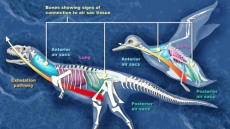The manner in which the harmful consequences of an action are described significantly influences the level of punishment that people consider appropriate, but only in cases where the harm was intentional, a brain imaging study shows.
When the harm was described in a graphic or lurid fashion, then people set the punishment level higher than when it was described matter-of-factly, the study showed.
However, this higher punishment level only applied when the participants considered the resulting harm to be intentional.
When they considered it to be unintentional, the way it was described did not have any effect.
"What we have shown is that manipulations of gruesome language leads to harsher punishment, but only in cases where the harm was intentional; language had no effect when the harm was caused unintentionally," said lead author of the study Michael Treadway from Harvard Medical School in the US.
In the experiment, the brains of 30 volunteers (20 male, 10 female, average age 23 years) were imaged using functional MRI (fMRI) while they read a series of brief scenarios that described how the actions of a protagonist named John brought harm to either Steve or Mary.
The scenarios depicted four different levels of harm: death, maiming, physical assault and property damage. In half of them, the harm was clearly identified as intentional and in half it was clearly identified as unintentional.
Two versions of each scenario were created: one with a factual description of the harm and the other with a graphic description.
They found that the amygdala, an almond-shaped set of neurons that plays a key role in processing emotions, responded most strongly to the graphic language condition.
However, this effect in the amygdala was only present when harm was done intentionally.
The study appeared in the journal Nature Neuroscience.






